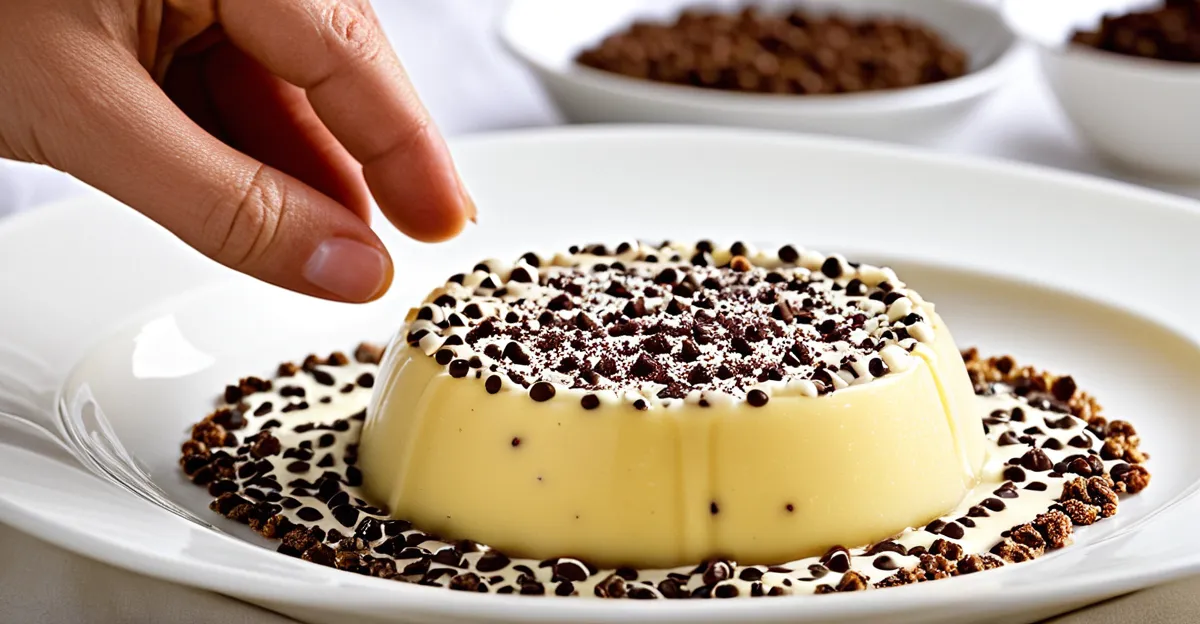Traditional Spotted Dick Pudding Overview
Spotted dick pudding holds a special place in British desserts, admired for its rich history and enduring appeal. Originating in the 19th century, this classic British pudding has become iconic in British culinary tradition. The name “spotted” refers to the currants or raisins—those distinct dark spots that punctuate the light, fluffy suet-based dough. “Dick” is thought to be a colloquial term for pudding or dough.
Steamed rather than baked, spotted dick embodies the essence of traditional British steamed desserts. These puddings feature a dense yet moist texture, achieved through slow, careful steaming rather than dry heat. This method preserves moisture and enhances flavor, making steamed puddings an esteemed part of British culture. The nostalgia and comfort associated with spotted dick are closely tied to family meals and holiday traditions.
Have you seen this : What Unique Ingredients Define Authentic British Cuisine?
Its appeal lies in simplicity and heartiness, offering a subtly sweet palate balanced by the rich, crumbly suet and fruity bursts from dried currants. The pudding’s long-standing presence in British cuisine showcases not just a beloved recipe, but a piece of history that continues to bring both familiarity and delight to dessert lovers everywhere.
Essential Ingredients and Equipment
To create an authentic spotted dick, using the right traditional spotted dick ingredients is crucial. The core components include suet, flour, sugar, and dried currants or raisins—the “spots” giving the pudding its name. Plain flour provides structure, while suet imparts the characteristic moist, crumbly texture unique to many British pudding ingredients. Additionally, a pinch of salt and baking powder help the pudding rise softly during steaming.
Also read : What Unique Ingredients Define Authentic British Cuisine?
Apart from ingredients, choosing the proper baking equipment is just as important. A heatproof pudding basin or a deep, covered bowl ensures even cooking. Traditional methods use a cloth tied tightly around the mixture, but modern silicone or ceramic basins with lids simplify the process. A large saucepan or steamer must hold enough boiling water to surround the pudding without drying it out. A tight-fitting lid is essential to trap steam and maintain moisture.
For convenience, a kitchen thermometer can help maintain the correct steaming temperature. Finally, using a sturdy mixing bowl and wooden spoon aids in combining the ingredients evenly without overworking the dough. These steps reinforce the integrity of the pudding’s texture and flavor, achieving the hallmark of classic British puddings.
Step-by-Step Preparation Guide
Mastering the spotted dick recipe begins with precise preparation. First, sift together the plain flour, baking powder, and a pinch of salt to ensure even rising. Next, finely chop or grate the suet, the key fat in traditional spotted dick ingredients, to distribute moisture and richness evenly. Fold in the dried currants or raisins carefully, as these are the “spots” that define the pudding visually and flavor-wise.
To answer the common question, how to make spotted dick with the right dough consistency? The batter should be moist but not too sticky—a soft, pliable mixture that holds shape but isn’t runny. This balance ensures a light texture without compromising the dense, comforting nature of British puddings.
Mix the ingredients gently with a wooden spoon to avoid overworking the dough, which can toughen the pudding. Shape the mixture into a smooth dome or pack it firmly into a greased pudding basin. Cover tightly with baking parchment and foil or a lid if using a basin. This step locks in moisture during steaming, crucial for the pudding’s tender crumb.
Following these pudding preparation steps carefully guarantees an even rise and the classic texture unique to spotted dick.
Steaming and Cooking Techniques
Mastering spotted dick steaming instructions is essential to achieve the pudding’s signature moist texture and even rise. Place the prepared pudding basin in a large saucepan with boiling water reaching halfway up its side—this ensures gentle, consistent steaming. Cover the basin tightly with a lid or foil to trap steam and prevent drying.
For cooking times, steam the pudding for around 1.5 to 2 hours. Check water levels regularly, topping up with boiling water as needed to maintain steam. Avoid letting the water boil dry, which can cause uneven cooking and a tough crust.
If uneven texture occurs, it often results from incorrect steaming temperature or water exposure. Maintaining a steady simmer, not a rolling boil, protects the delicate crumb of this traditional dessert. After steaming, allow the pudding to rest briefly before unmolding; this helps it set and retain moisture.
Employing these British pudding cooking tips and traditional pudding methods ensures your spotted dick emerges tender, flavorful, and with those iconic currant “spots” well distributed throughout the soft, suet-rich dough.
Serving and Presentation Suggestions
Serving spotted dick in a way that honors its heritage enhances the experience of this classic British pudding. Traditionally, spotted dick is presented still warm, unmolded carefully from its basin to reveal its iconic “spotted” interior. This visual appeal is key to showcasing the dried currants or raisins, which create the pudding’s unmistakable look.
Common and beloved accompaniments include thick, creamy custard poured generously over slices of the pudding, imparting a silky contrast to the moist, suet-rich crumb. Alternatively, lightly whipped cream or even a simple drizzle of golden syrup can complement the subtly sweet flavour without overpowering it.
Questions often arise about the best way to serve spotted dick: Should it be sliced hot or warm? Serving it warm, just after steaming and resting, ensures the pudding is tender and the flavours are at their peak. Overcooling can cause the texture to firm up, diminishing its traditional moistness.
For added authenticity, serve the pudding on simple white plates or in classic British crockery. This presentation respects the dish’s humble origins while inviting diners to enjoy an enduring British dessert staple in an elegant yet approachable manner.
Ingredient Substitutions and Adaptation Tips
When considering spotted dick substitutions, flexibility can make this classic more accessible. For example, if traditional suet is unavailable, vegetable fat-based suet or grated cold butter can substitute without drastically altering texture. These ingredient alternatives maintain the moist, crumbly quality essential to traditional spotted dick ingredients.
For dried fruit, swapping currants or raisins with sultanas or chopped dried apricots adds nuanced sweetness without losing the pudding’s character. Such substitutions keep the “spots” visually distinct while offering subtle flavor variations.
Dietary adaptation is straightforward: using gluten-free flour blends instead of plain flour ensures the pudding suits gluten intolerance. Vegan versions require replacing suet and butter with plant-based fats and using egg alternatives or omitting eggs if included. Adjusting sugar levels can cater to reduced-sugar diets.
Experimenting with these ingredient alternatives allows adherence to dietary restrictions and ingredient availability, all while preserving the essence of British pudding ingredients. These swaps explain how to make spotted dick remain approachable and enjoyable for a wider audience, ensuring tradition adapts with modern needs.




